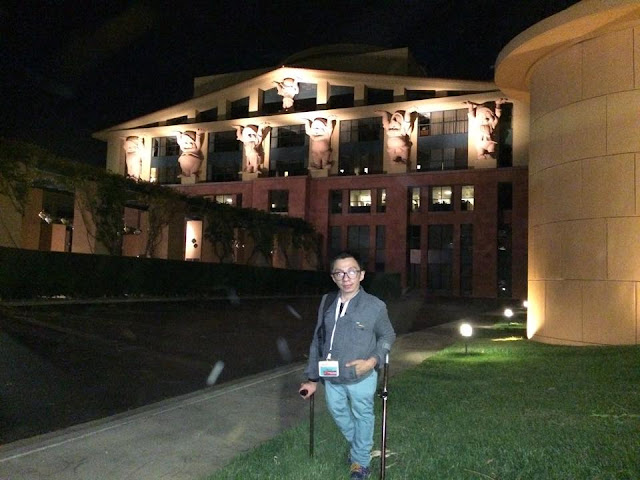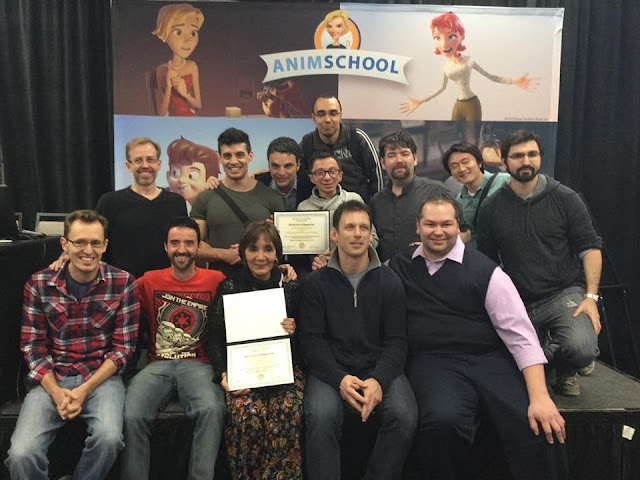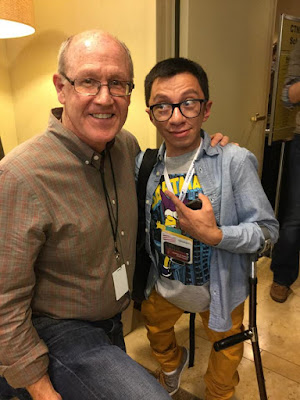
Brien Hindman is an environmental modeling supervisor at Disney Animation and an Instructor at one of the best 3D animation schools-- AnimSchool. Previously, he was a senior modeler at Blue Sky Studios as well as the environmental modeling lead for Ice Age 3. Films he has worked on include: Moana, Big Hero 6, Frozen, Wreck It Ralph, Epic, Ice Age: Continental Drift, Rio, Ice Age: Dawn of the Dinosaurs, Horton Hears a Who!, Ice Age: The Meltdown, and Robots.
As he himself is one of the many modelers at Disney who watches incoming demo reels on a regular basis, he gives his students lots of advice about the best, most effective ways to create their demo reels. Despite being a very busy guy, Brien agreed to share his insight with all of our readers.
What are the guidelines you tell your students when making a turntable?
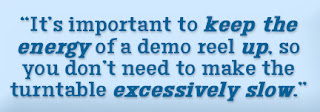 Be sensitive to screen time. Remember that professionals are looking at your work, and they can tell within a few seconds if it’s good or not. It’s important to keep the energy of a demo reel up, so you don’t need to make the turntable excessively slow. Generally about 3 rotations within 5 seconds is enough, which includes almost a full rotation with the wireframe comped onto the model. Start the turntable almost a full second before the most important side of the model, which typically includes the face. This gives you time to cross dissolve from your previous model, as well as giving the viewer enough time to figure out what she or he is looking at. It’s a bit annoying to have to wait a full second to see the face, but I’ve seen many turntables that start out on the face, but includes a cross dissolve, so we are essentially seeing the backside of the model first. It’s a good way to kill the moment of the demo reel. Further, end the rotation in a smart place. It doesn’t have to be where you began it, but you want to leave the model in an interesting place. It makes a better impression. Generally, 2 seconds or so per rotation is good, but it really depends on the model. I would say 4 seconds is pushing it in terms of speed.
Be sensitive to screen time. Remember that professionals are looking at your work, and they can tell within a few seconds if it’s good or not. It’s important to keep the energy of a demo reel up, so you don’t need to make the turntable excessively slow. Generally about 3 rotations within 5 seconds is enough, which includes almost a full rotation with the wireframe comped onto the model. Start the turntable almost a full second before the most important side of the model, which typically includes the face. This gives you time to cross dissolve from your previous model, as well as giving the viewer enough time to figure out what she or he is looking at. It’s a bit annoying to have to wait a full second to see the face, but I’ve seen many turntables that start out on the face, but includes a cross dissolve, so we are essentially seeing the backside of the model first. It’s a good way to kill the moment of the demo reel. Further, end the rotation in a smart place. It doesn’t have to be where you began it, but you want to leave the model in an interesting place. It makes a better impression. Generally, 2 seconds or so per rotation is good, but it really depends on the model. I would say 4 seconds is pushing it in terms of speed.In general, what should a good modeling demo reel look like in terms of length, variety, and number of models?
Longer demo reels do not constitute better demo reels! It’s better to make a shorter, stronger demo reel that is 1 minute long than pad it with an additional minute of mediocre work. Don’t overstay a model’s welcome. You’ll only annoy the professionals. Remember, they have a dozen others to get through, as well as get back to work. You’re not fooling anyone by making the demo reel by including that crane up rotation in addition to the standard demo reel rotation.
Consider who you are sending the demo reel to. Your demo reel is a commercial, as well as an extension of yourself. Variety is usually good, as it implies you are willing to work on sets as well as characters. Further, different styles show you are adaptable and have a good eye. From one project to the next, the style can be very different, and an employer will want to see you can produce from show to show.
In general, I tell my students they should include a variety of body types, genders and styles. A hyper real character is good to include as well, but if it’s a feature animation studio, they won’t want to see an entire demo of hyper real characters. Conversely, a video game studio won’t know what to do with stylized cartoon characters for the most part. Environments are important as well. An interior with plenty of scale cues is a good choice, as is a stylized car if it’s for a animation studio, real otherwise, as well as an exterior organic environment. Making trees is hard. Most people are terrible at it. Hard surface is good to demonstrate as well, but that is usually covered by the interior.
What makes the best arrangement of models, for example should the best ones be at the beginning, the end, or a little of both?
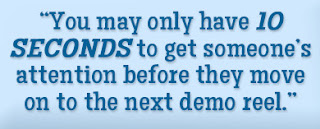 Many people have different opinions on this matter. I think best first, second second and third last is best. You may only have 10 seconds to get someone’s attention before they move on to the next demo reel, so it’d be a shame if they never saw what you consider to be your second best work if it is last. That said, you want to end strong and leave a good impression. The third best model is generally enough to do that.
Many people have different opinions on this matter. I think best first, second second and third last is best. You may only have 10 seconds to get someone’s attention before they move on to the next demo reel, so it’d be a shame if they never saw what you consider to be your second best work if it is last. That said, you want to end strong and leave a good impression. The third best model is generally enough to do that.Should our modeling reels differ depending on the studio we are applying for? If yes, how so?
Yes. In addition to what I mentioned, consider each prospective employer a client. Said employer generally is not going to want to think outside of the box. If they can directly apply your skills to their needs, you will have a better shot.
You guys look through hundreds of demo reels all the time and I’m sure they all start to look the same. How can we make ours stand out from the rest and be remembered?
Follow everything above. Generally, HR screens the demo reels for us, and then we look at the top picks. You have a lot of hurdles to get over, so if the demo reel is entertaining from beginning to end without music, then you have a good shot. An easy way to stand out is to not build the same kind of characters or models as everyone else. Anime characters with giant swords are generally a good way to be forgotten. Everyone does it.
 What are some common mistakes that you often see people make in their modeling demo reels?
What are some common mistakes that you often see people make in their modeling demo reels?
They add music. They don’t show wireframes. They add models that they shouldn’t have added that aren’t nearly as good. It shows a lack of judgement in that case. Remember you are saying you think these models are the very best you can do. If you don’t think it’s the very best, then don’t include it.
Don’t model well known 3d characters. Someone with more experience has already done it, and so you are inviting a comparison between someone with 15 years+ experience and yourself.
Any final words of wisdom?
Make your demo reels as modular as you can, so you can drag and drop turntables in with as little effort as possible. The more customizable the demo reel, the better you can tailor it for a prospective employer.
Thanks Brien!
To learn more about AnimSchool's online animation programs, as well as Brien's Intermediate Modeling class, please join us at animschool.com














